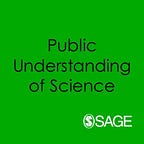Can Science Make Sense of Life?
Review by Steven Yearley
Jasanoff has done an excellent job of taking readers through a wide range of life-sciences issues and highlighted the pervasive issue of where exactly the boundaries between the technical and the moral/political are, and should be, drawn.
As Jasanoff herself notes near the end of this valuable publication, there is a risk in writing a book whose title is a question to which most people can guess the author’s answer. It is no spoiler to disclose that her answer is fundamentally “no”. But Jasanoff takes advantage of the title to show how, since the 1970s, scientists have tended to try to monopolise the role of expert analysts of life; she also highlights many of the reasons why leaving the matter to the scientific community alone has been and remains a bad idea.
Jasanoff has been working on the development and regulation of the life sciences for the last four decades at least, and her experience is key to the character of this compelling overview. She has the authority and insight to set developments in context, and moves easily between regulatory skirmishes during the Ford presidency and the most recent work on synthetic embryos. Her examples are well chosen, and the key twists and turns are charted very clearly.
Chapters 2 and 3 are pivotal to the book’s success. The first of these deals with the way that the life-sciences community presented itself as not only capable but also destined to self-regulate even in the morally complex area of the scientific exploitation of life. Jasanoff documents how “science repeatedly assert[ed] its right to be free from external controls because it is adequately self-policing and hence entitled to rule itself”.
Life scientists maintained they did not need external regulation and that attempts to regulate from outside would backfire, tending to slow the rate of scientific and technological advance. Jasanoff cites critiques of these claims from within science studies but shows how tightly the life sciences clung to this line of argumentation, even while individual scientists were seeking to float their spin-out companies on the stock market. Biological superstars became celebrated for their wealth and business acumen, all the while claiming exceptional moral and regulatory status because of the inherently self-regulatory character of scientific research.
Chapter 3 examines the law’s response to these developments, showing that, despite some misgivings, the initial legal reaction was to allow scientists to establish the frameworks they called for, whether because these were seen as mandated by the nature of scientific enquiry or for fear that additional regulatory demands imposed by courts would slow the progress of biology and thus delay new cures or treatments. The decisive Diamond v. Chakrabarty ruling (1980) which permitted the patenting of living organisms revealed, as Jasanoff puts it, that in “the Supreme Court’s imagination … science, as the institution concerned with unveiling nature, operates according to its own sovereign urges, rhythms, and desires that are simply not amenable to management by other institutions”.
For Jasanoff, this amounted to passing up on the chance to push the central question about the patentability of life back where it belonged — in the political sphere, in Congress. Jasanoff shows that subsequent legal decisions — both in the USA and in Canada — tended to treat life-sciences questions as not merely technical but as political. But to a significant degree the North American settlement with the life sciences had already been made.
The subsequent two chapters deal, again in close detail, with the later contests over stem-cell biology and the handling of newly emerged entities such as ‘pre-embryos’, hybrid embryos and synthetic embryos. Scientists were less successful in maintaining control over the debate here, and Jasanoff skilfully uses her comparative studies of the USA, Germany and the UK to examine the different ways that the technical and the political were made to intertwine.
The final substantive chapter examines new ambitions for biology, particularly in the USA, where Jasanoff focuses on science policy agendas for enhanced biological interventions in areas such as biodiversity protection, environmental policy and novel energy futures.
Jasanoff has done an excellent job of taking readers (perhaps with little biology background) through a wide range of life-sciences issues and highlighted the pervasive issue of where exactly the boundaries between the technical and the moral/political are, and should be, drawn. Keeping the book compact has obviously led to some omissions. For example, though the UK, Canada and Germany get some mentions, the book is very focused on the US where the pace has so often been set. It would have been good to see some discussion of the situation in China — where the boundary between the technical and the political has a starkly different interpretation — and also of India’s thriving life and medical sciences sector.
There is one last question raised by the book which it would have been exciting to see Jasanoff explore further. She gives a compelling account of the economic transformation of biology and of the accompanying reassurances afforded by the imagined impartiality of science. But this raises a question about possible feedbacks on scientific practice. If biotech pioneers are focused on their investment portfolios and the architecture of their corporate structures, exactly what kinds of implications does this hold for the robustness of the scientific knowledge claims they produce?
Steven Yearley is Professor of the Sociology of Scientific Knowledge and director of the Institute for Advanced Studies in the Humanities, at University of Edinburgh, Scotland. His books include The Sage Dictionary of Sociology (2006) (with Steve Bruce) and Making Sense of Science (2005).
